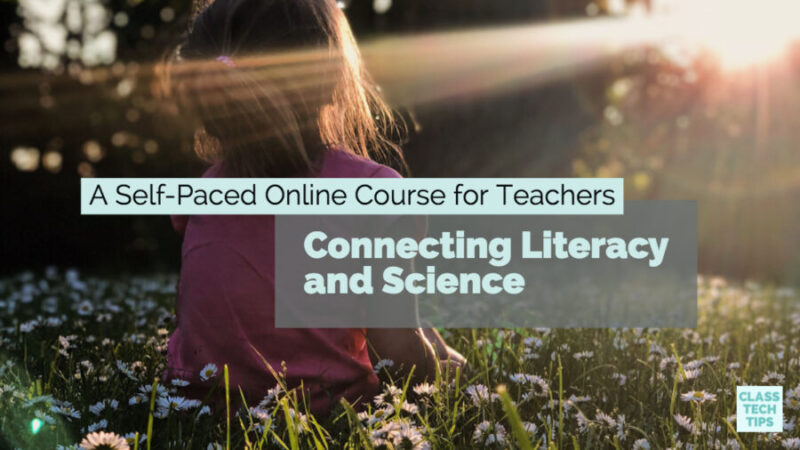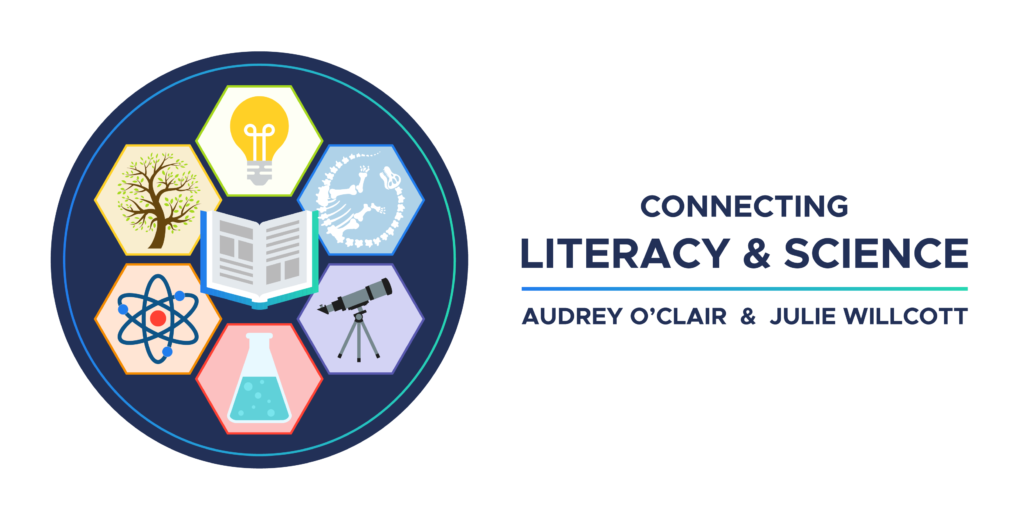Traditionally the school day is carved into chunks of time for each subject area. Cross-curricular exploration of content is essential! How can you connect literacy and science in your classroom? The new course Connecting Literacy and Science from rockstar educators Audrey O’Clair and Julie Willcott will help you strengthen your literacy and science instruction this school year!
Connecting Literacy and Science
As a classroom teacher, I taught in a traditional public school. Over the course of my time there, we transformed into a magnet school with the theme of environmental stewardship. I shared this story earlier this year and couldn’t help but revisit this experience with you today. Having taught in an environmental stewardship magnet school, I believe in the power of cross-curricular connections. I’m so excited to spread the word about this new course! It is designed to help educators strengthen the connection between literacy and science.
Participate is a dynamic platform for educators that gives users access to Twitter chats and curated Collections of resources. It’s also a tool for hosting online courses like my self-paced EdTech Reboot course. Connecting Literacy and Science is a brand new course for educators open for anyone to join. I’ve spent lots of time talking to course authors Julie and Audrey about their passion for education and professional learning. They were kind enough to share more about their course and answer my questions about their enthusiasm for this topic.
Online Course for Teachers
Audrey O’Clair is a literacy expert and co-founder of KJS Early Literacy Training and Julie Willcott is a fellow Apple Distinguished Educator and Independent Educator. They created a self-paced, online course for educators interested in learning strategies for combining literacy and science instruction.
Course Creation
What brought you two together to create a course on this topic?
This course provided us the opportunity to collaborate on, and most importantly combine, a topic that is important to each of us – science for Julie and literacy for Audrey. It also allowed us to share our experiences teaching at different grade levels – Audrey with early learners and Julie with high school students.
Why is this topic important to you?
Julie: Too often learning can feel isolated. Traditional educational methods can assume that context and divergent interests are left behind when a student enters the classroom. In order to teach the whole child, it is important to make connections between content areas.
Audrey: I always tell my own children that there are more things that make us alike than make us different. I think the same can be true for the subjects we teach. If we can embrace the commonalities between two or more core subjects and combine forces with our colleagues the student connections to the content becomes stronger as do our professional relationships.
Course Components
What will someone find in your course?
Our course is full of resources (books and more) to use when connecting literacy and science.
We include activities, both digital and analog, to connect literacy and science in the learning environment. You can adapt the activities to most grade and ability levels. We shared our process for making the activities accessible and inclusive to remind our audience that access and inclusion need to be a forethought in lesson design, regardless of subject matter.
A unique feature of the course is the identification of language around literacy and science. By understanding the language of these content areas, you can see the connections between them. We included words that had meaning and implications in both areas and would allow our audience to have a shared vocabulary. We also hope that teachers will embed this language in their teaching in an effort to expose learners to this rich vocabulary.
In addition, we make accessibility a fore-thought, designing lessons that are inclusive from the very beginning.
Who should take this course?
This course is for K-12 educators and anyone involved with educating and mentoring children.
What do you hope educators will walk away with after completing this course?
We hope educators will finish this course with an enthusiasm for connecting literacy and science in their learning environment. We want educators to feel supported and have resources on hand to create a successful learning experience. Our purpose for creating this course was to inspire others to work together to gain and share perspective for the good of their learners.
Join in! Connecting Literacy and Science is now open to educators – it’s self-paced so you can move through the content on your own time and earn your badge from Participate!








